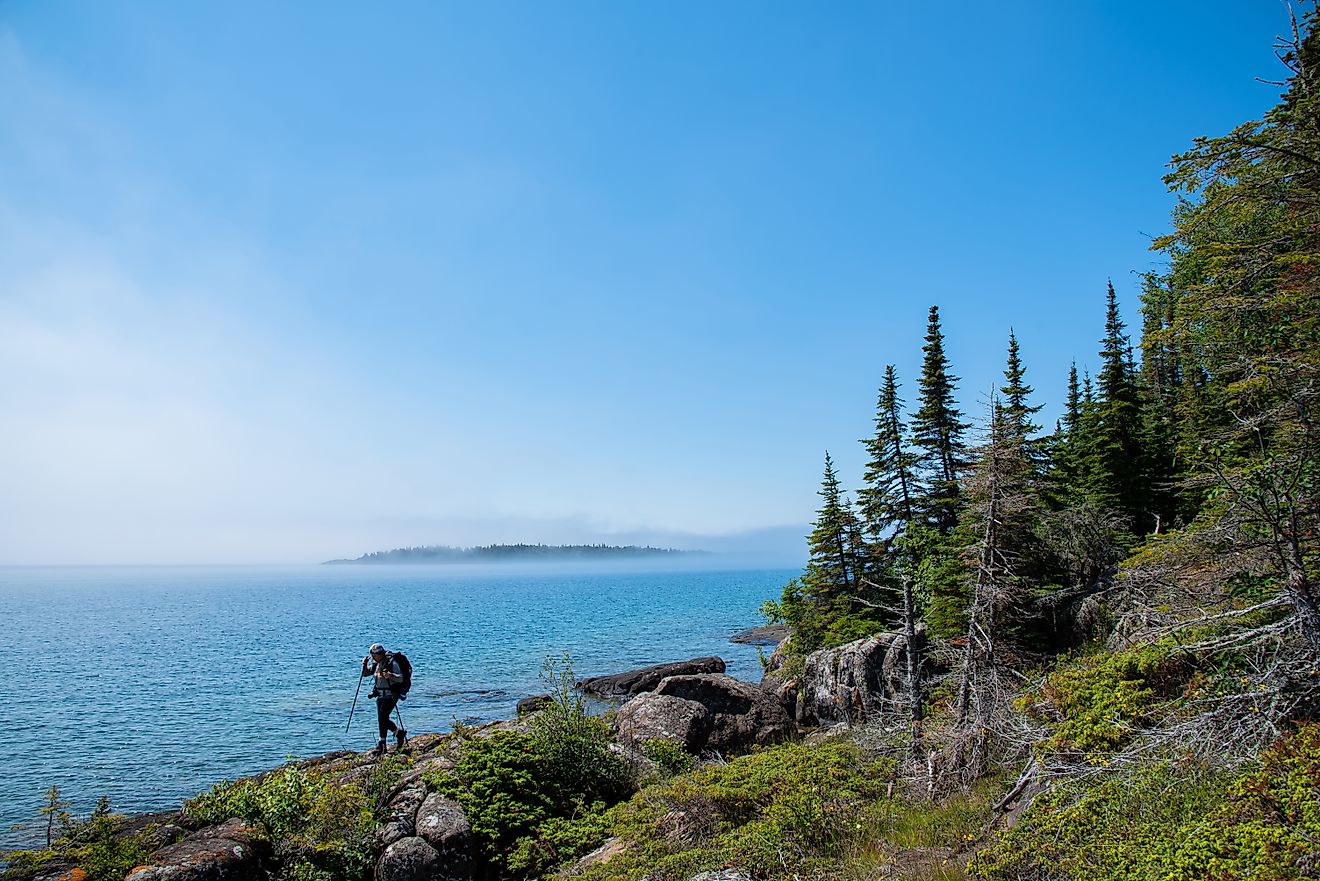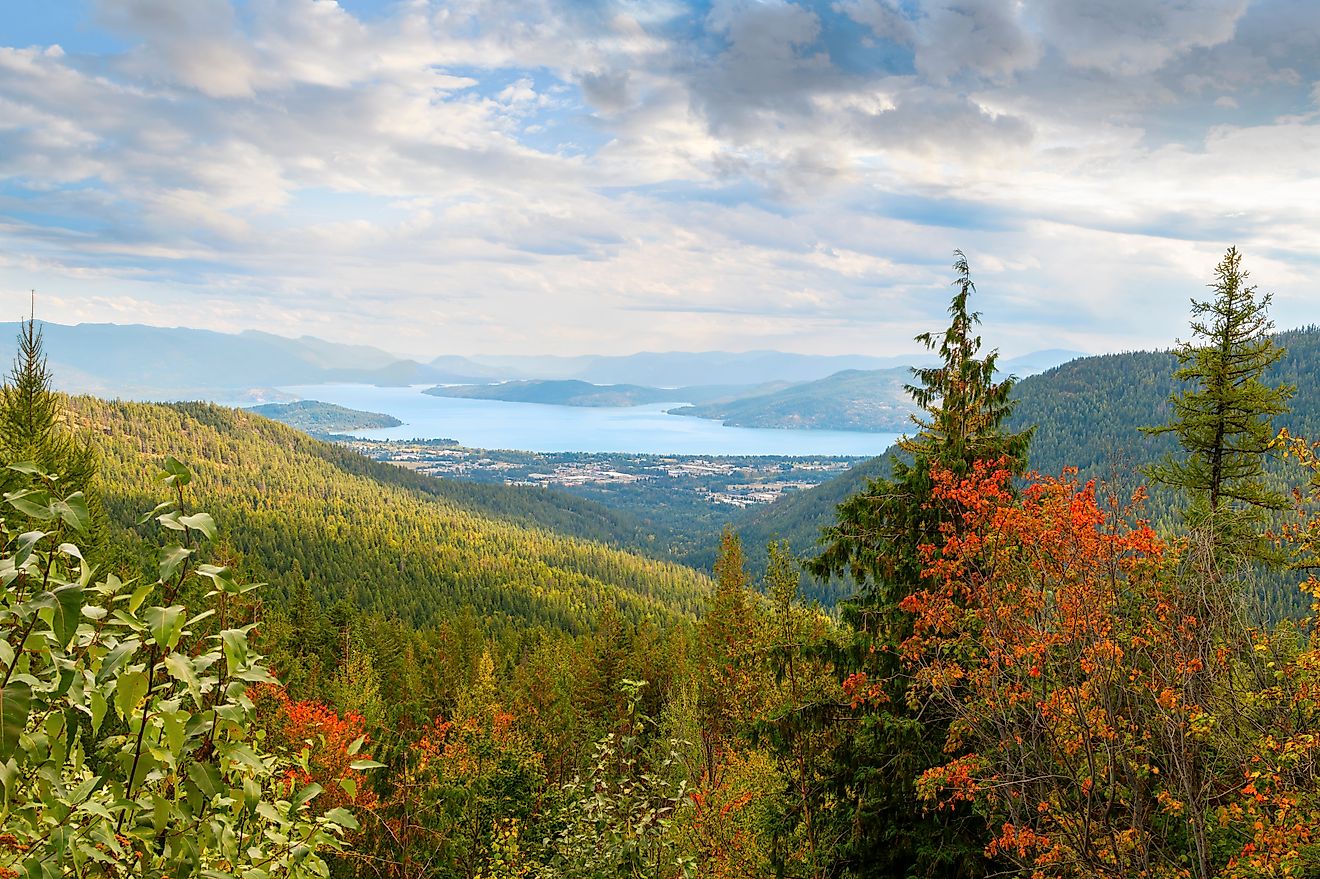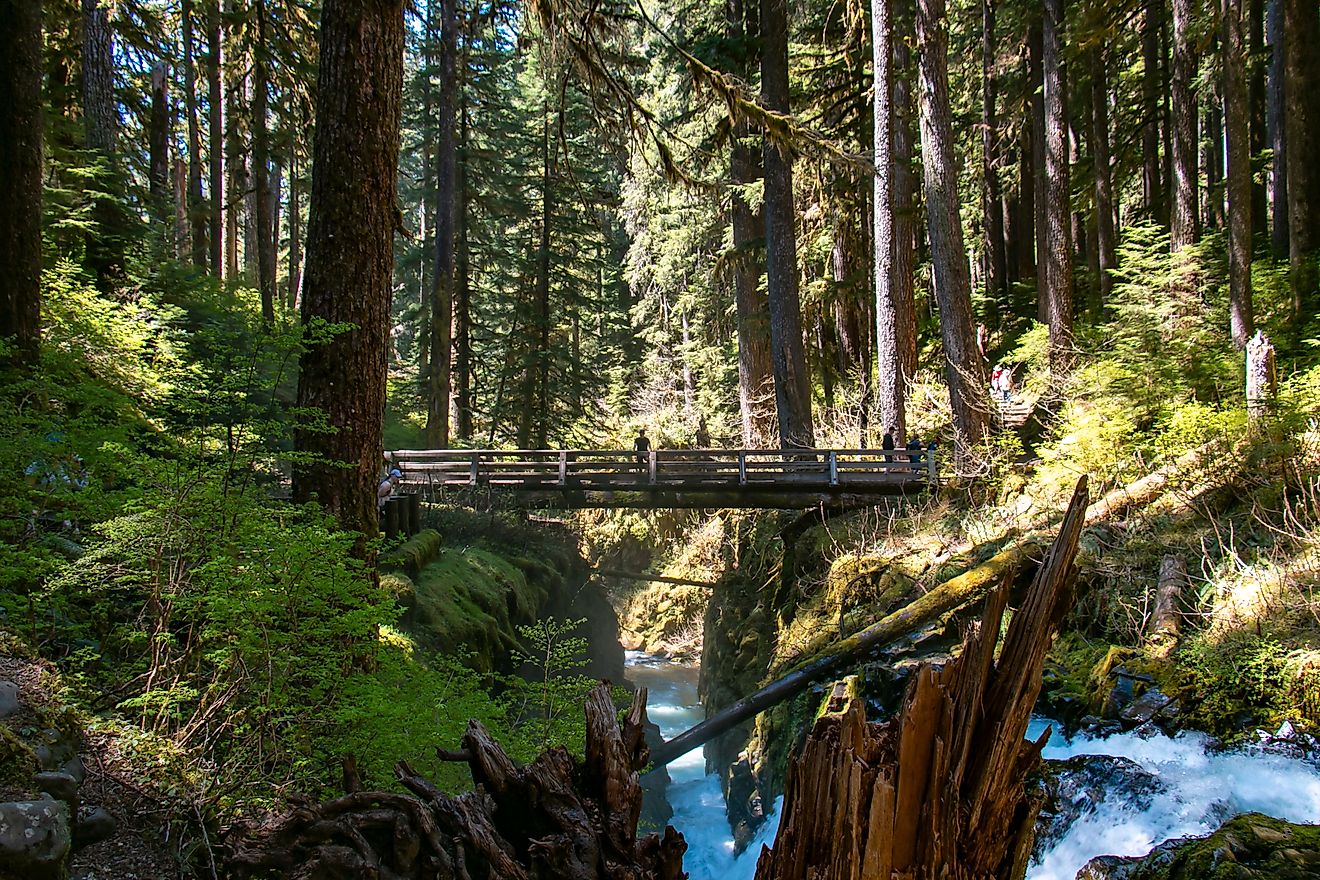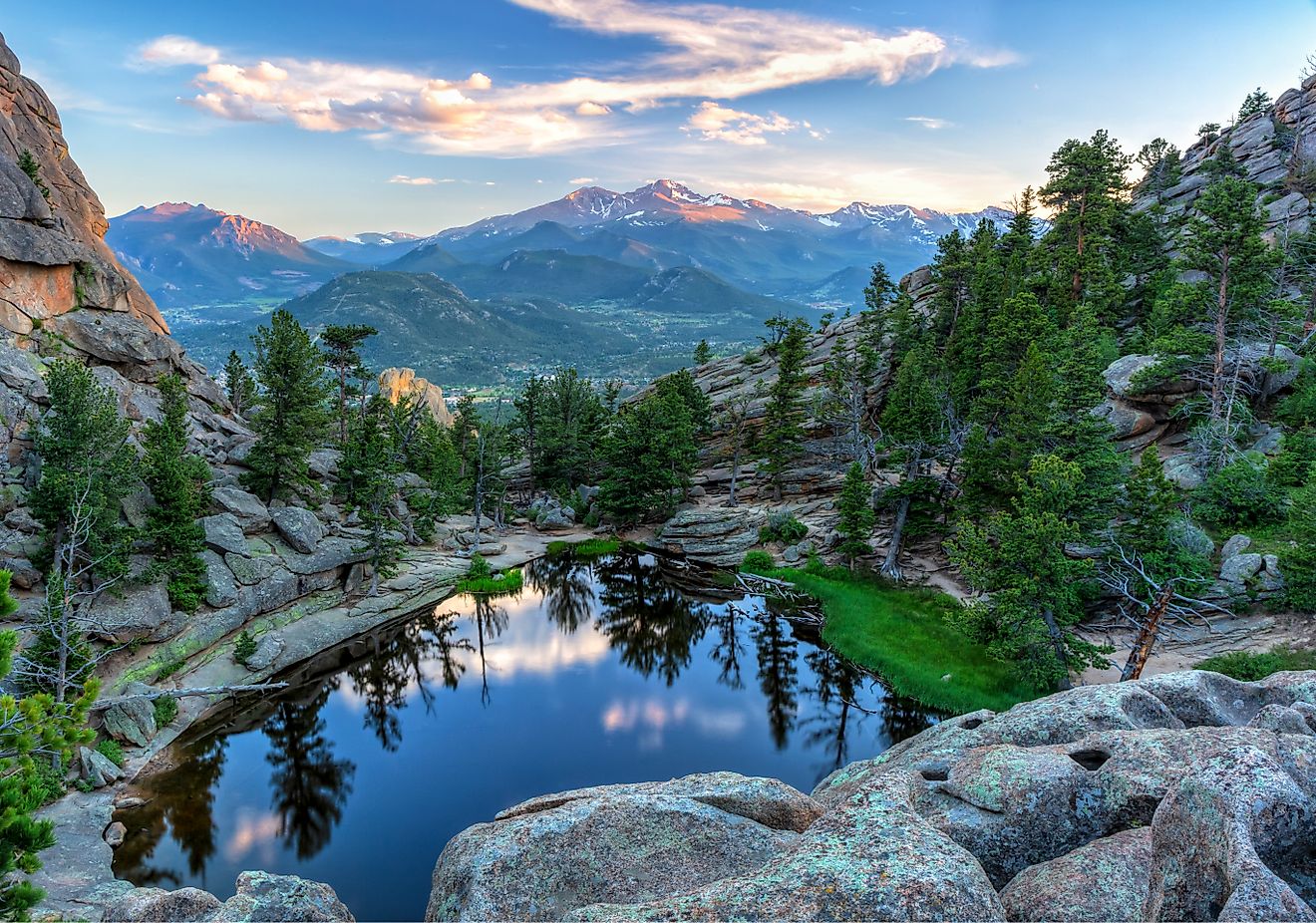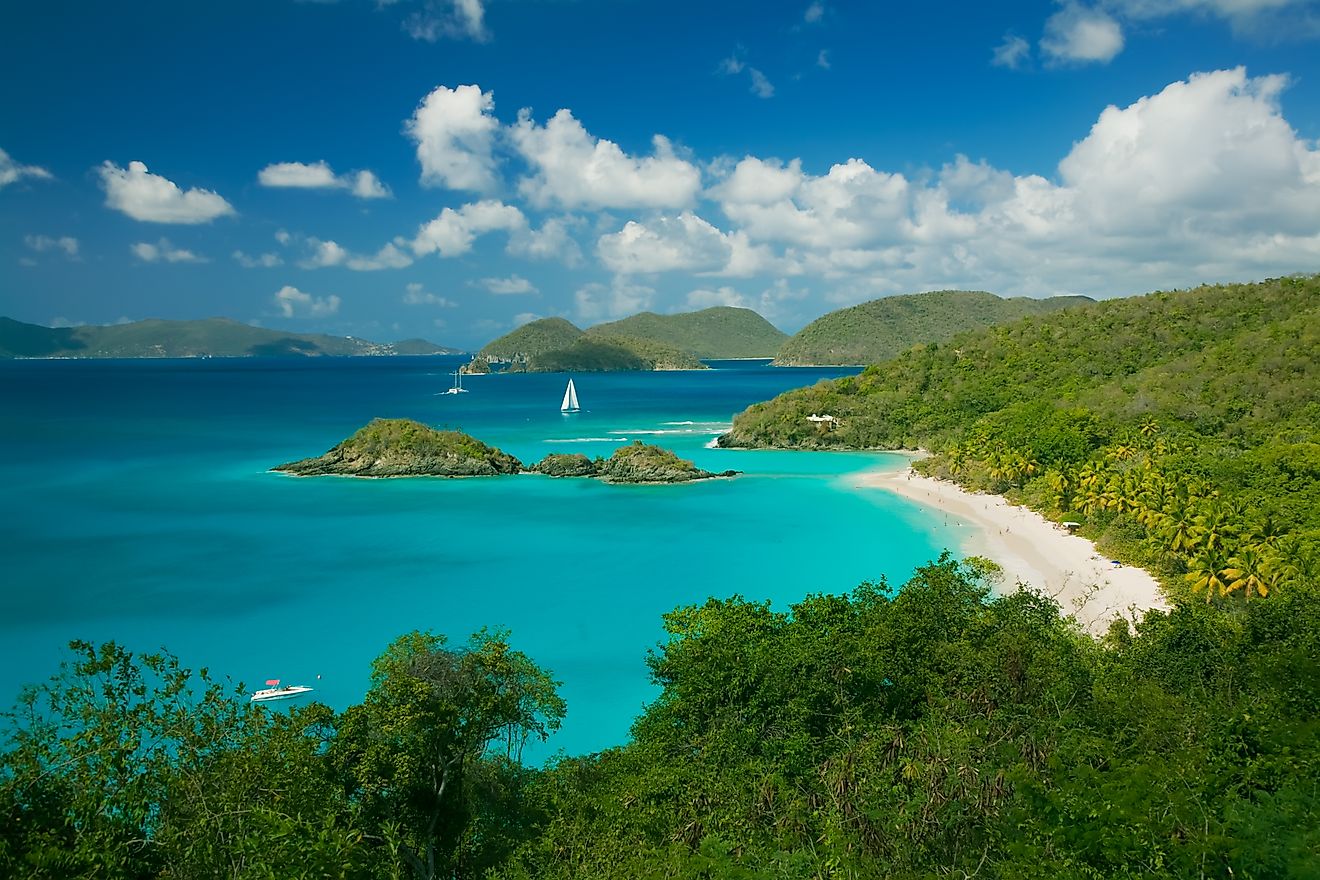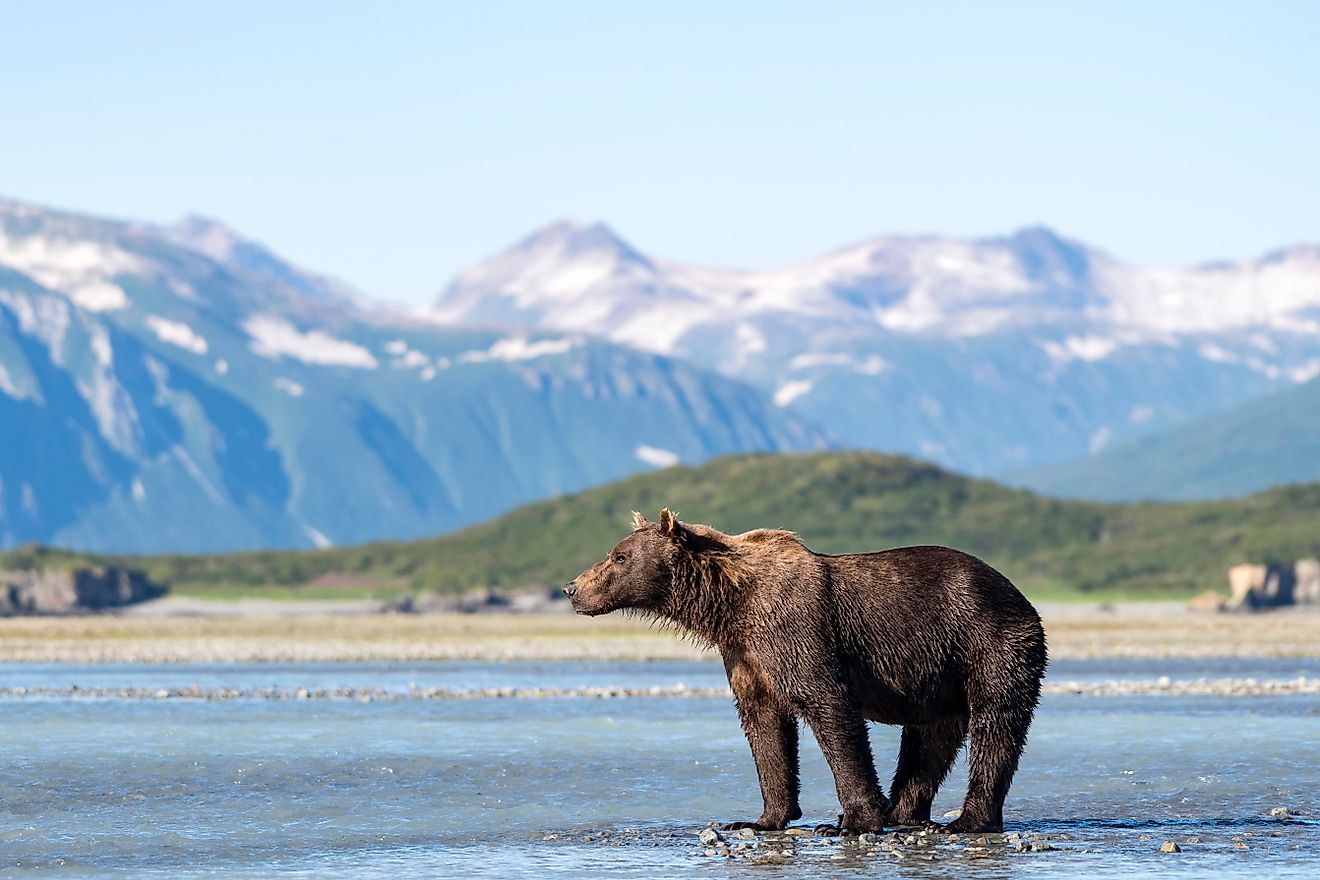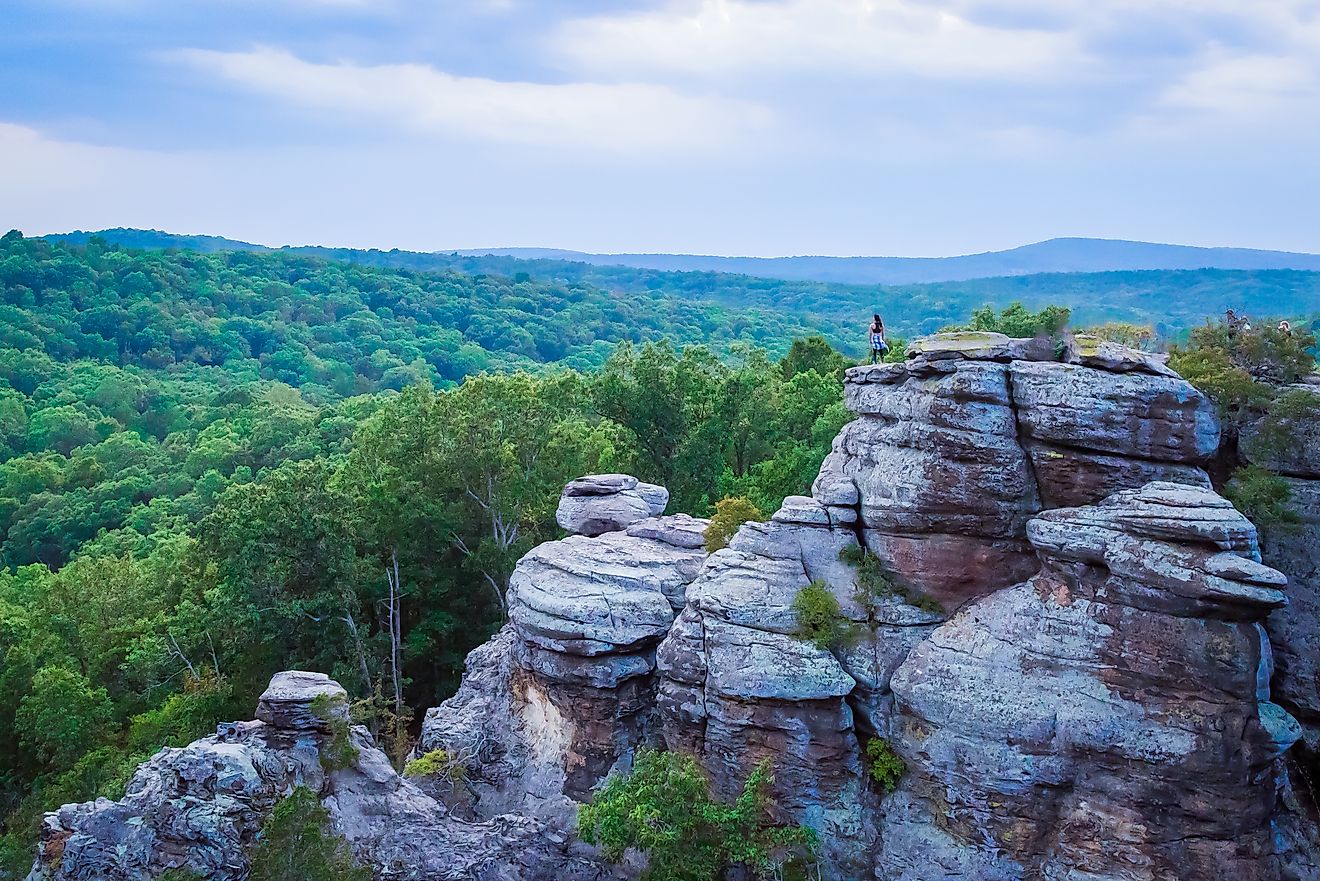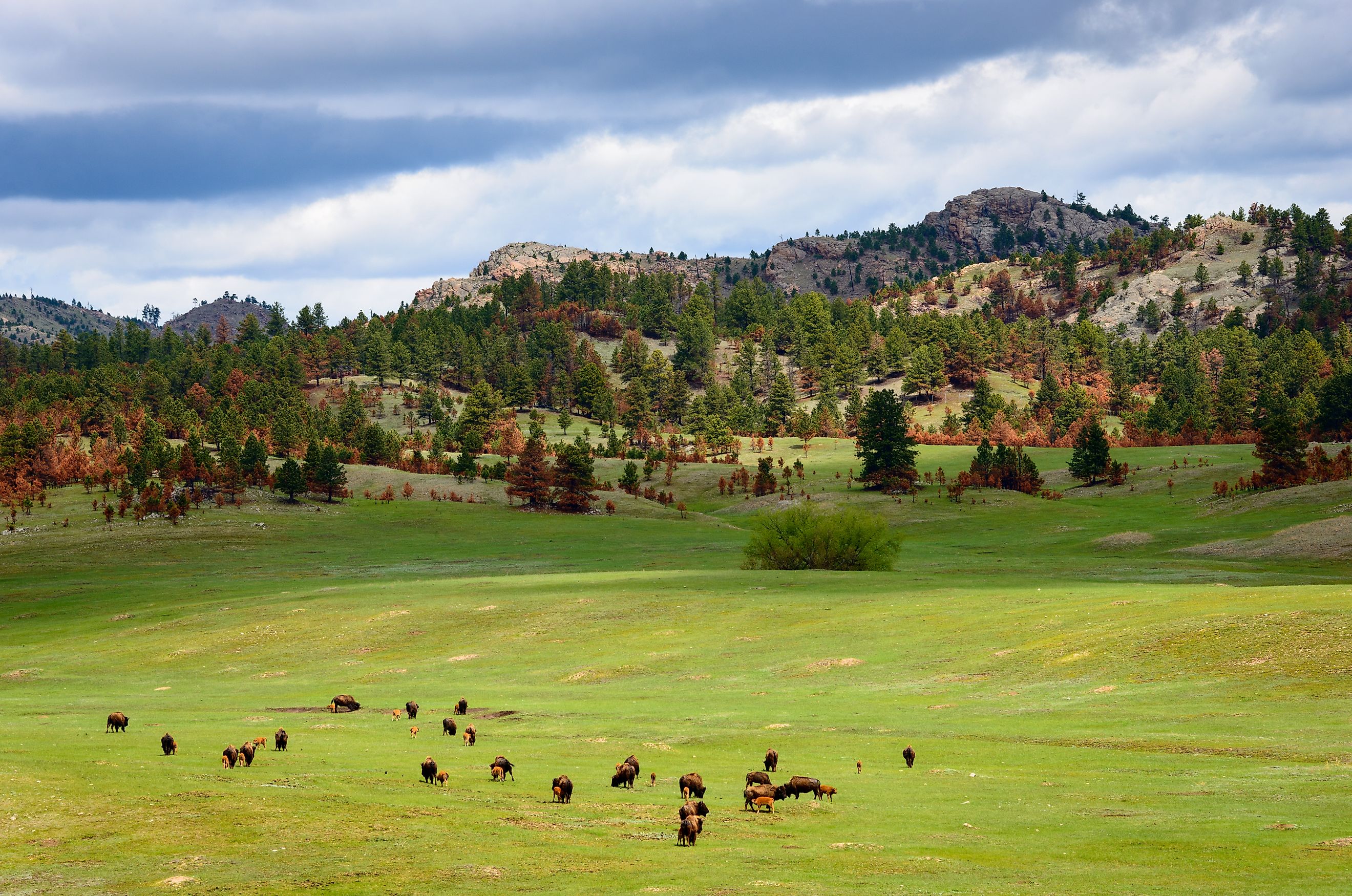
Black Hills National Forest
Rising like an island out of the vast prairie sea, the Black Hills National Forest stretches across western South Dakota and northeastern Wyoming, covering 1.2 million acres of rugged terrain, open meadows, sparkling lakes, and pine-covered peaks. Known to the Lakota Sioux as Paha Sapa, meaning “hills that are black,” this mystical region has long captured the imaginations of those who visit and it’s easy to see why.
From sacred Native American grounds to modern outdoor recreation havens, the Black Hills offer a rare blend of cultural history and natural splendor. Whether you’re hiking to the highest point east of the Rockies or caving beneath the surface in search of geological wonders, the Black Hills National Forest is a destination that demands exploration.
Where the Hills Turn Black
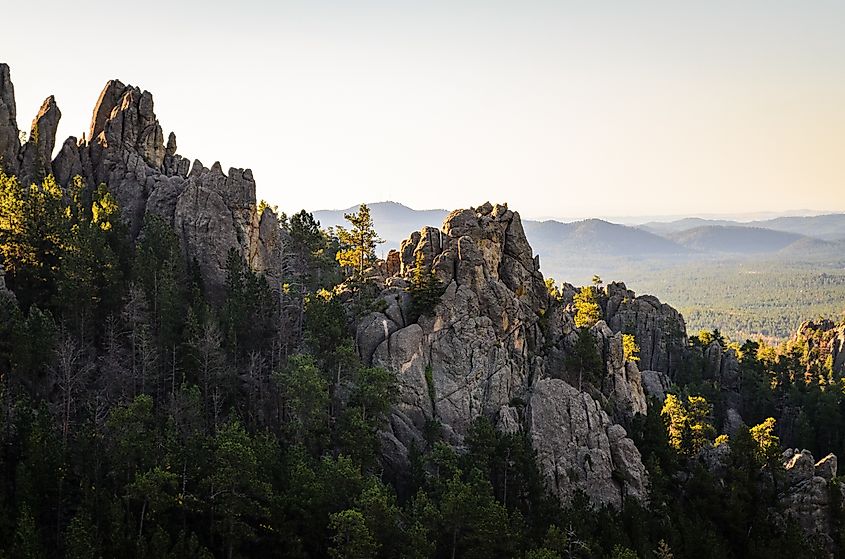
Approaching from the Great Plains, the first thing you notice about the Black Hills is how they darken the horizon. The name, Black Hills, isn’t just poetic, it’s literal. Pine trees blanket the landscape so densely that the hills appear black from a distance, a striking contrast to the golden prairies below.
The Lakota people, among the first to inhabit and name this land, believed these hills were sacred. The Black Hills were a place of visions, spiritual renewal, and peace so revered that rival tribes often set aside conflicts when entering them. Today, that spirit of awe and reverence remains, whether you're a hiker, a history buff, or simply a traveler in search of quiet beauty.
10,000 Years of Human History
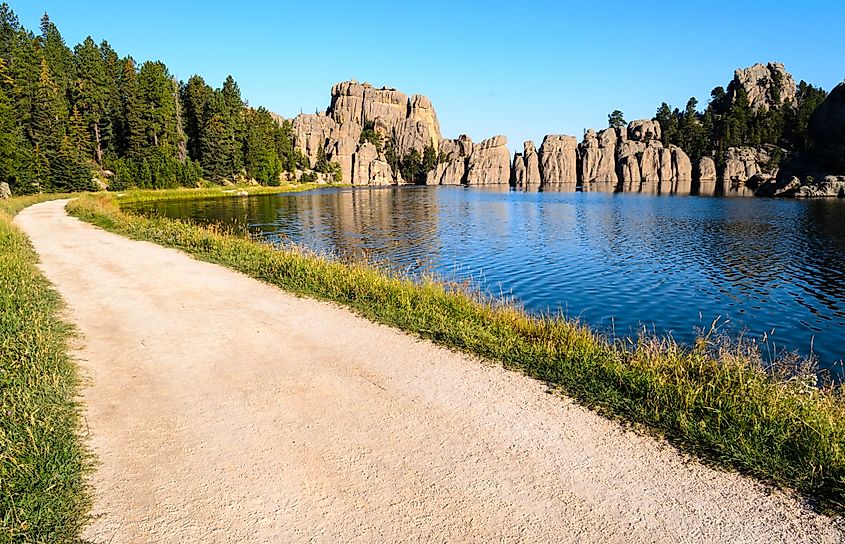
The cultural significance of the Black Hills stretches back more than 10,000 years, as archaeological evidence has uncovered ancient tools and remnants of early inhabitants. Over the centuries, many Indigenous nations, including the Arapaho, Cheyenne, Kiowa, and Lakota, made pilgrimages to the Black Hills.
It wasn’t until the 19th century that European-American settlers arrived in force, spurred by the gold rush and a network of wagon trails. Conflicts ensued over land rights and sacred sites, culminating in historical flashpoints that still resonate today. Despite this turbulent past, the Black Hills remain a bridge between cultures, home to Native American ceremonies, historic trails, and educational exhibits honoring the land's diverse heritage.
Harney Peak (Now Black Elk Peak)

At the center of the forest’s spiritual and geographic identity stands Black Elk Peak (formerly Harney Peak). Rising 7,242 feet above sea level, it is the highest natural point east of the Rocky Mountains. Named after the Lakota holy man Black Elk, the summit offers more than just a scenic reward, it’s a place steeped in cultural significance.
From the historic stone lookout tower at the summit, the panoramic views stretch across four states: South Dakota, Nebraska, Wyoming, and Montana. It’s no wonder many hikers describe reaching Black Elk Peak as a moment of quiet triumph. The Black Elk Wilderness surrounding it is equally stunning, with granite spires, pine-scented trails, and hidden clearings that feel untouched by time.
A Playground for the Adventurous
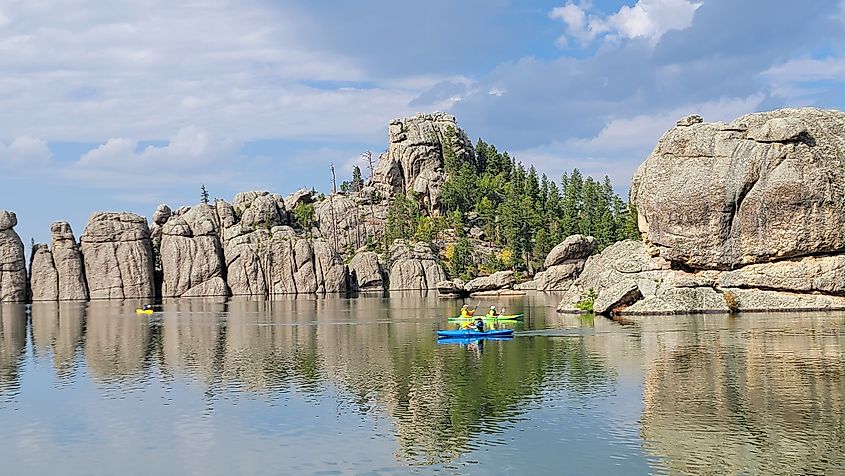
The Black Hills National Forest is a thriving hub for year-round recreation. With 13,000 acres of wilderness, 11 reservoirs, 1,300 miles of streams, and 353 miles of designated trails, it’s a natural playground for outdoor enthusiasts.
Hiking & Biking
The forest boasts over 450 miles of hiking trails, ranging from easy loops to challenging summit treks. Notable favorites include:
-
Cathedral Spires Trail: For striking granite formations.
-
Lover’s Leap Trail: A scenic 4-mile loop with vistas and legend.
-
Black Elk Peak Trail: A must-do for experienced hikers.
Mountain biking is permitted on many multi-use trails, making this a great destination for fat-tire adventures through pine forests and over rocky ridges.
Water Activities
The many reservoirs and streams provide abundant opportunities for fishing, boating, and swimming. Anglers can expect to find trout, bass, and perch in places like Sheridan Lake, Pactola Reservoir, and Deerfield Lake. Kayakers and paddleboarders will enjoy peaceful mornings on these quiet waters.
Off-Roading & Horseback Riding
For those craving horsepower, designated areas offer thrilling off-road vehicle experiences through rugged backcountry. Meanwhile, equestrians can find solitude on horseback trails that weave through meadows and shady valleys.
Caving & Moon Walks
Beneath the surface, the Black Hills hide a labyrinth of limestone caves, some of which are accessible for recreational caving and guided exploration. But for a truly unique experience, consider a Moon Walk.
Held on Saturday nights closest to the full moon, these guided hikes bring visitors to places like fire lookout towers, mining camps, and wildlife habitats. Lasting about one to two hours, these nighttime hikes offer a surreal way to experience the forest's nocturnal side.
Scenic Byways and Iconic Drives
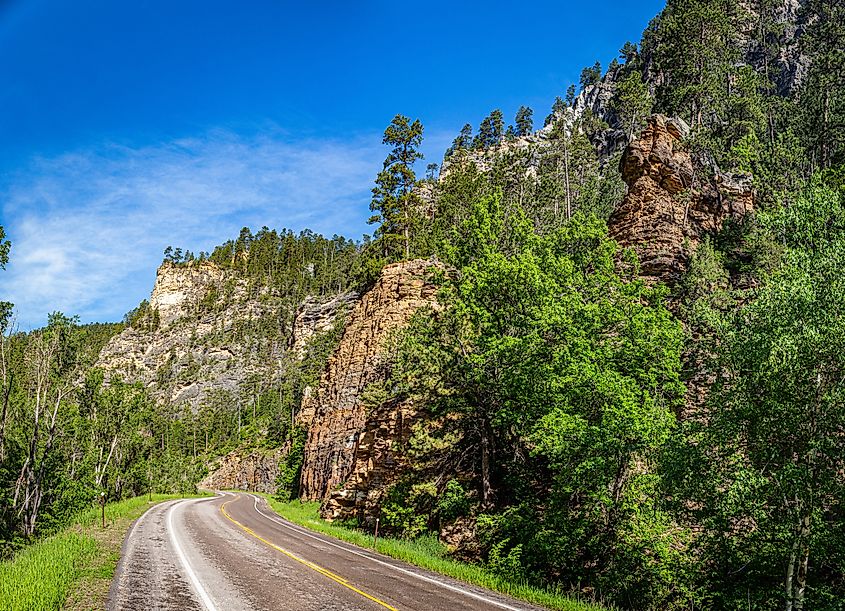
If you prefer your adventure from the driver’s seat, the Black Hills deliver. The forest is home to two scenic byways that showcase its diverse geography:
-
Spearfish Canyon Scenic Byway: Carves through towering limestone cliffs with waterfalls, fall foliage, and photo ops around every bend.
-
Peter Norbeck Scenic Byway: Winds past granite tunnels, rock formations, and panoramic pullouts on the way to Mount Rushmore.
These drives are especially popular in autumn, when the forest explodes with color. Don’t forget your camera.
Camping Under the Stars
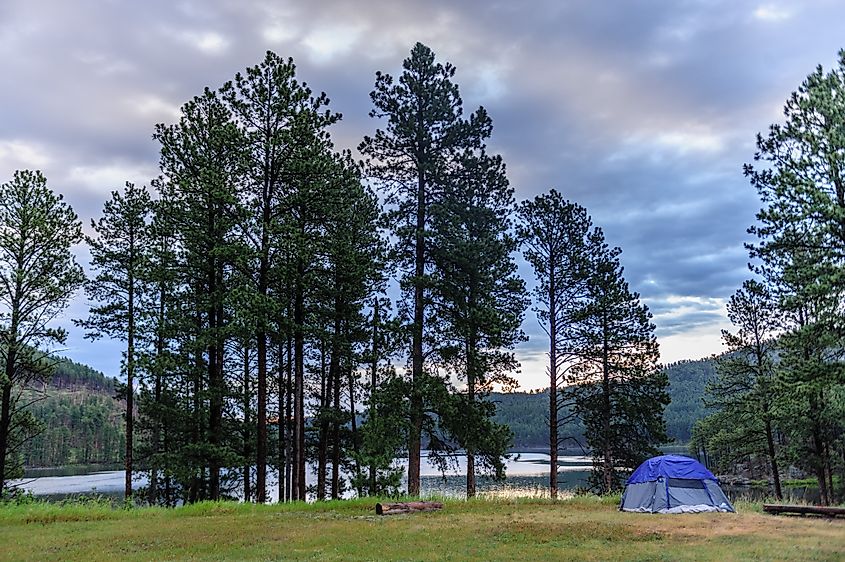
Nothing beats a night under the stars in the Black Hills. The forest features 30 campgrounds and 32 picnic areas, many with facilities for tents, RVs, and cabins. Popular campgrounds include:
-
Sylvan Lake: Ideal for families, kayaking, and quick trail access.
-
Sheridan Lake North: Scenic, spacious, and a favorite for boaters.
-
Horsethief Lake: Quiet and wooded, close to Mount Rushmore.
Wilderness camping is also allowed in designated areas, offering a back-to-basics escape in some of the forest’s most remote corners.
Protecting a National Treasure

Despite its beauty, the Black Hills National Forest is not without environmental challenges. Wildfires, beetle infestations, and increasing tourism all place pressure on the ecosystem. Active conservation efforts include forest thinning, trail maintenance, and educational programs that help protect the forest for generations to come.
Wildlife lovers will appreciate the chance to see elk, bighorn sheep, mule deer, bald eagles, and even the occasional mountain lion.
Quick Facts About Black Hills National Forest
-
Location: Western South Dakota & Northeastern Wyoming
-
Area: 1.2 million acres
-
Highest Point: Black Elk Peak 7,242 feet
-
Trails: 450+ miles of hiking trails
-
Recreation: Hiking, biking, caving, fishing, camping, boating, horseback riding
-
Unique Experience: Full moon “Moon Walks”
-
Scenic Drives: Spearfish Canyon & Peter Norbeck Scenic Byways
-
Established: 1897 (as part of the Forest Reserve Act)
Frequently Asked Questions (FAQ)
Is Black Hills National Forest the same as the Badlands?
No, the Black Hills and Badlands are separate areas. The Black Hills are forested, mountainous terrain, while the Badlands are known for eroded rock formations and desert-like conditions.
When is the best time to visit the Black Hills?
Late spring through early fall offers ideal weather for hiking and camping. Fall brings colorful foliage, while summer is great for lake activities and Moon Walks.
Are pets allowed in the Black Hills National Forest?
Yes, but pets must be kept on a leash in developed recreation areas and campgrounds. Always clean up after your pet.
Do I need a permit to camp or hike?
Most areas are open for free public use, but some activities (like backcountry camping, OHV use, and organized events) may require permits. Always check with the Forest Service before you go.
